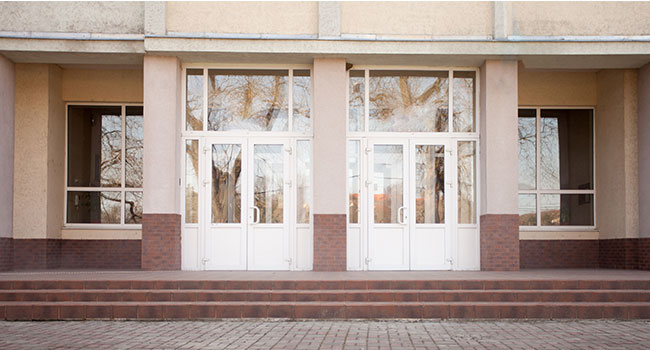
NY District Adding Security Vestibules
Installation of security vestibules has begun on Lynbrook District’s campuses, according to Dr. Paul Lynch, assistant superintendent of finance, operations and information systems.
- By Jessica Davis
- July 01, 2019
Installation of security vestibules has begun on Lynbrook District’s campuses, according to Dr. Paul Lynch, assistant superintendent of finance, operations and information systems.
“Some big work is happening right now,” Lynch said. “So, if you’ve been to South [Middle School], Marion Street or North [Middle School] recently, you’ll see there are a brand-new set of doors there.”
Security vestibules were installed at the high school last summer, Lynch told the Herald. “Door work” will begin at West End, Waverly Park and the Kindergarten Center the first week of July.
After the doors are installed, the electronic components will be added. Construction should be finished by the time the school year starts in the fall.
These security vestibules serve as extra doors to keep visitors from entering the building without being cleared and approved for access. Once they’re installed, visitors to any building in the district will have to ring a call button before being granted entry.
The visitor will step inside a vestibule and be required to give a form of ID to a security guard, who will then scan the documents against sexual offender databases and verify that the ID matches the visitor. If approved, the guard will print out a sticker for the visitor with their picture on it and they will be buzzed into the school itself.
Once the visitor is done in the school, they will remove their sticker and return it to the security guard in exchange for the return of their ID.
According to Director of Facilities James Saitta, the new system has multiple benefits. It requires visitors to return to the security desk to collect their ID, which also allows security to ensure that the visitors actually leave the campus. In addition, “every visitor who comes in will be logged,” Saitta said, and the security staff will know exactly who is in the building.
About the Author
Jessica Davis is the Associate Content Editor for 1105 Media.